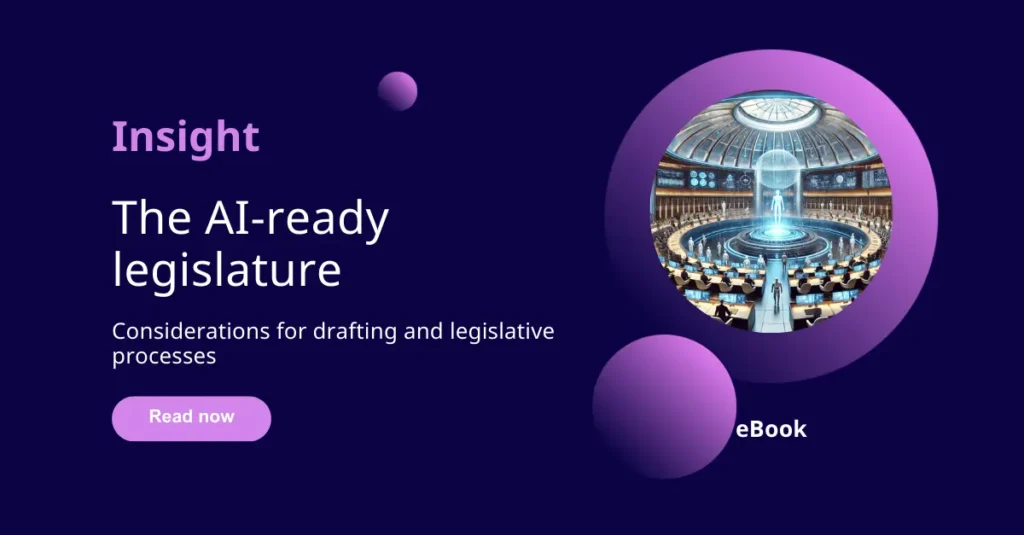Today, it seems a common complaint is that creating meaningful change in our societies is simply too difficult, too complex.
Nowhere is this more felt than in the capitols, parliaments, and government buildings where our laws and regulations are crafted.
How did we arrive at the point where the very instruments designed to structure and progress society are seen as obstacles?
The enduring complexity of lawmaking
The challenge of legislative drafting is not new; it has long been acknowledged as one of the most difficult tasks an attorney can do. In his 1955 publication, How to Write a Law, Reed Dickerson, a respected scholar on how lawyers write and think, deemed legislative drafting the most difficult form of legal drafting – technically challenging and carrying immense social weight.
“One reason why it is hard to teach people how to draft is that like all writing it looks easy,” Dickerson observed. In fact, the writing stage of drafting is the final act in an extensive and often complicated piece of work. It is sometimes the easiest; however, this should not be misconstrued to imply that the task itself is easy.
AI is not a cure-all or a replacement for human expertise; it is still a computer.
Artificial intelligence (AI): easy fix or added complexity?
Faced with this complexity, it is easy to think that AI, with its perceived capacity for hyper-reasoning, will simply be able to solve this problem – a superhuman force that can wade in and take charge. However, without guardrails, this powerful tool risks exacerbating the complexities it seeks to resolve.
The issue lies in good intentions that often have unintended consequences. In isolation, an individual law or policy idea may appear like a good idea. However, when that law becomes codified and layered onto the existing legal framework without a full understanding of prior dependencies, this can create a complex web of unforeseen effects. This is where the slowdown can occur.
Does that mean we should get rid of rules? Do we simply need to eliminate red tape?
Yes and no. The goal is not necessarily fewer, but better rules. We need to improve the tools to support drafting attorneys’ work; we need to improve how drafting attorneys control the unintended consequences.
Understanding the full body of statute within a given jurisdiction, grasping the intricate dependencies between a new piece of law and the existing corpus of laws, regulations, and standards – this is a superhuman feat of recall and analysis. Historically, this has relied on proactive research by experts.
Smarter governance through augmented expertise
This is where technology, specifically AI, can make a difference – not by replacing the expert, but by supporting their capabilities. In How to Write a Law, Dickerson compares the work of a drafting attorney to that of an architect. The most important thing, he says, is that the architect is called in at an early stage. An architect doesn’t design a house until they know exactly what the client is trying to accomplish. Similarly, the drafting attorney must walk the fine line between avoiding transcription without insight or critical thinking, but also not overstepping into policymaking.
Knowledge is the backbone to improving this process. The right technology can arm drafting attorneys with a complete picture, helping them map the full scope of impact while they draft.
Imagine a conversational interface where the drafting attorney can check how a proposed new law impacts the existing body of laws, standards, and regulations. Perhaps they are prompted by the tool to review a list of suggestions.
This approach would fold the research process into the drafting workflow, so that the experts no longer need a superhuman brain to recall every dependency that exists in the body of law. Instead, technology can pinpoint areas needing expert review while they’re improving that policy. This will lead to improved policy implementation.
One reason why it is hard to teach people how to draft is that like all writing it looks easy.
Reed Dickerson
Quality data is non-negotiable
Conversations about how AI might impact society seem to suggest that it might cure cancer. AI is not a panacea; in reality, AI is changing how software is developed; it is changing how administrative documentation is created; it is changing how first drafts of legal documents are created.
Crucially, the quality of AI outputs depends on the quality of the data it consumes. Good data is structured data from which clearly defined relationships can be established. This includes being able to establish the ‘ground truth’, the verified reality of a document. It’s being able to manage laws and regulations at, for example, the clause level. It’s the ability to enrich clauses with metadata – be it for tracking purposes, for reuse in other documents.
This gives AI systems a rich foundation – it knows where to ‘put’ things, so to speak.
The law is one of the most important and sensitive areas for discussions around AI incorporation. AI-related issues like hallucinations (generating plausible but incorrect information) are well-documented.
In 2024, researchers from Stanford University assessed the performance of Retrieval-Augmented Generation (RAG) legal AI tools and found that while the frequency was reduced, hallucinations were not eliminated. The research ultimately highlights what we already knew: legal professionals are indispensable in validating AI-generated information.
We must be wary of viewing such tools as merely cost-cutting, but as an enrichment mechanism for the work that experts already do.
The path forward: technology is not a sledgehammer for change
The complexity of drafting the law has not diminished since Dickerson first published his work over 70 years ago. If anything, the volume and complexity of laws, regulations, and standards seem to be increasing.
Yet, the expectation often remains that drafting attorneys should retain this vast, evolving information landscape in their heads. Good drafting requires fully considering the impact on the entire existing body of laws and regulations to clarify the impact and avoid conflicts.
Technology can never fully solve the inherent political challenge of effective policymaking. But for the staff in the middle of it all, the legal staff and attorneys carrying out the drafting, technology can give them a far better chance of improving the quality of rule implementation.
Beyond assisting with impact analysis, AI tools can also help manage the regulatory footprint by identifying duplicate or near-duplicate laws and regulations at scale. This is a healthy thing. If you don’t mow the lawn, it’s going to grow wild.
Ultimately, any meaningful technology solution should equip experts with the tools to do their jobs better and deliver higher quality.
The answer is not to rip up the rulebook; nor is it to blindly throw AI at the problem. By providing better software to help the people who are writing the rules before conflicts arise and unintended consequences take root, this is the path forward. AI is not a cure-all or a replacement for human expertise; it is still a computer. The question should always be how we use the computers to significantly improve and solve the challenges we’re facing.
AI represents a genuine opportunity for meaningful change but only if it is implemented in the right way. The answer is not more AI, it is better data, powering smarter tools for human experts. Over to you: explore the potential of augmented intelligence.

